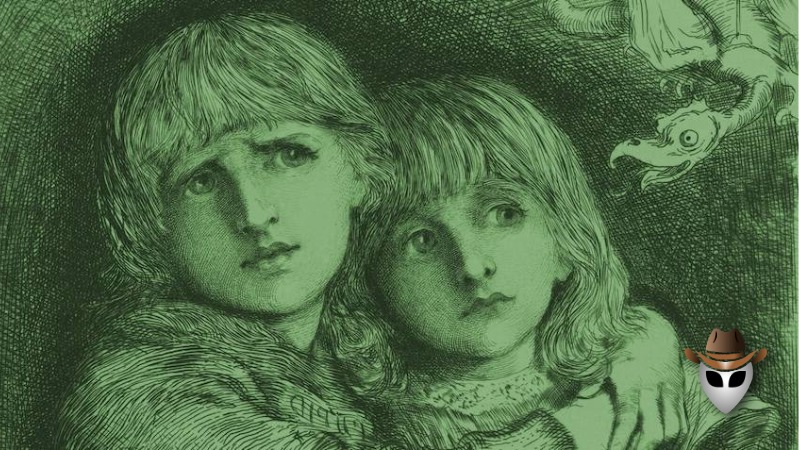The story of the Green Children of Woolpit is one of the most intriguing and enigmatic tales from medieval England. Originating in the 12th century, it tells of two mysterious children with green skin who appeared in the village of Woolpit in Suffolk. Over the centuries, this legend has captured the imaginations of many, leading to various interpretations and theories.
According to the legend, villagers discovered two children, a boy and a girl, emerging from a wolf pit (a trap used to catch wolves) during the reign of King Stephen or King Henry II. The children spoke an unknown language and wore unfamiliar clothing. Most remarkably, their skin was green. They were taken in by Sir Richard de Calne, who attempted to care for them. Initially, the children refused to eat any food offered to them, but eventually, they began eating beans and their health improved. Over time, their skin lost its green hue.
The boy, however, became ill and died shortly after their arrival. The girl, on the other hand, adapted to her new life, learned to speak English, and was baptized. She eventually explained that they came from a place called St. Martin’s Land, a subterranean world where everything was green, and it was always twilight. She claimed they had been herding their father’s cattle when they came upon a cave and, upon entering, found themselves in Woolpit.
Evidence in Favor of the Green Children
Historical Accounts: The primary sources for the story are two contemporary chroniclers, Ralph of Coggeshall and William of Newburgh. Their accounts, while slightly different, provide a level of historical documentation that lends some credibility to the existence of the Green Children.
Consistent Elements: Despite the variations in details, the core elements of the story remain consistent across different versions. This consistency suggests that the tale may have a basis in a real event or phenomenon that was interpreted through the lens of medieval understanding.
Possible Scientific Explanations: Some historians and scientists propose that the children may have suffered from a condition like chlorosis, a form of anemia that can cause a greenish tint to the skin. The symptoms would improve with a diet change, explaining the children’s recovery.
Evidence Against the Green Children
Mythological Nature: The story contains many elements typical of folklore and myth, such as the mysterious otherworldly origin and the strange appearance of the children. This suggests that the tale may be more of a moral or allegorical story rather than a factual account.
Lack of Corroborating Evidence: Besides the accounts of Ralph of Coggeshall and William of Newburgh, there is no other contemporary evidence to support the existence of the Green Children. No physical evidence or additional records from other sources confirm the story.
Possible Interpretations as Allegory: Some scholars believe the story may symbolize social or political issues of the time, such as the integration of different cultures or peoples. The green skin could be a metaphor for the children’s foreign origin and their initial inability to assimilate.
Cultural Context: Medieval Europe was rife with legends and supernatural tales. The Green Children of Woolpit fit within this tradition of storytelling, where unexplained phenomena were often attributed to otherworldly or mystical causes.
The tale of the Green Children of Woolpit remains a fascinating mystery that straddles the line between history and legend. While there is some evidence that lends a degree of credibility to the story, much of it is speculative and open to interpretation. Whether the Green Children were real individuals with a medical condition, visitors from a mythical land, or purely a creation of medieval folklore, their story continues to intrigue.
What do you think? Were the Green Children real? Share your thoughts in the comments below!
